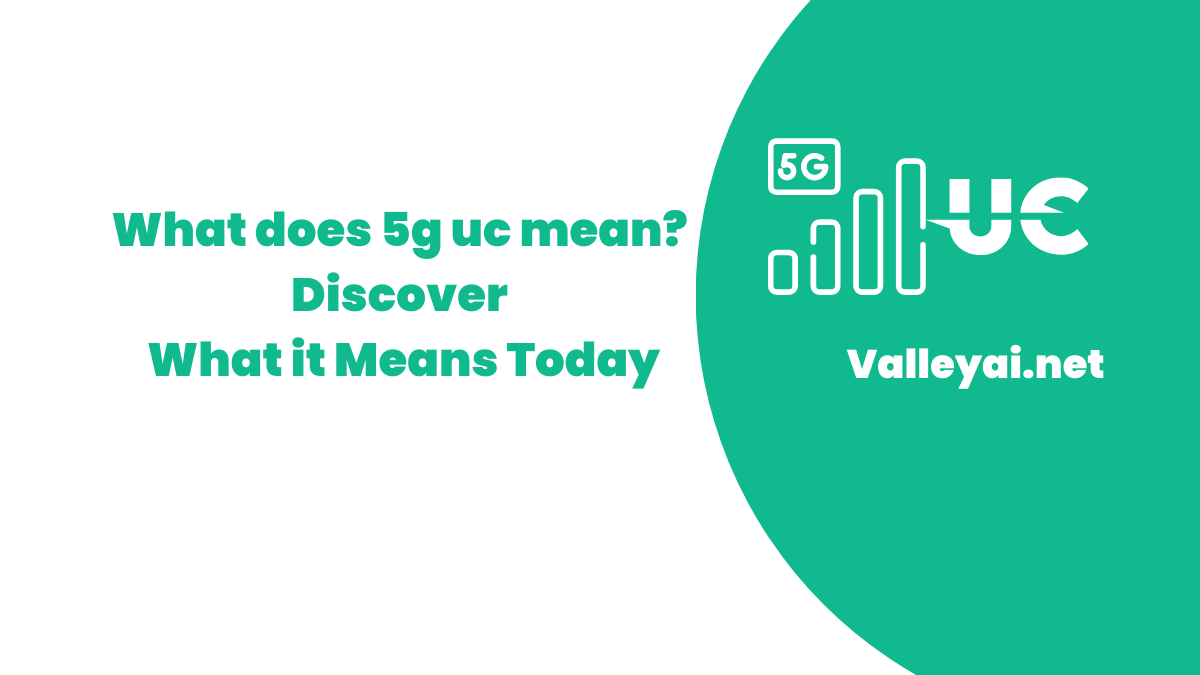If you’re a T-Mobile customer in the US, you’ve likely seen the 5G UC sign in the status bar of your smartphone and might have wondered what it means. In 2021, T-Mobile rolled out 5G UC as an upgraded network that brought faster, more reliable cellular connectivity to 200 million people. This 5G UC badge in your status bar lets you know when you’re connected to this premium network variant.
With 5G UC, Android, and iPhone users experience better performance than 4G LTE and even standard 5G, thanks to its faster speeds and wider reach. The quality of cell service and speed on this network can vary based on your location, but 5G UC is designed to deliver a significant difference in performance and connectivity.
Whether you’re in a crowded area or out on the go, 5G UC ensures a better understanding of network quality, giving you the right connection where it’s most needed. This new logo differs from other symbols like 5G UW, as it represents the successor to previous types of networks, making mobile experiences smoother and more regular than ever.
Let’s explore the 5G UC meaning. Unraveling what 5G UC stands for.
What is 5G?
5G is the fifth generation of wireless technology, a major step up from 1G, 2G, 3G, and 4G that has now become the newest global standard. With high-speed and low-latency connectivity, it powers not only your mobile device but also the Internet of Things (IoT) devices in your home. Whether it’s camera doorbells, app-controlled lights, smart appliances, or voice assistants, 5G boosts security systems and other devices with broad coverage across urban, city centers, suburban neighborhoods, and rural areas.
This technology has truly allowed people to “cut the cord” on tethered computers and enjoy the freedom of wireless devices, making connectivity more seamless and accessible than ever before.
What is 5G UC, and how is it different from other 5G networks?
5G UC, or Ultra Capacity, is T-Mobile’s advanced version of 5G that uses both mid-band and high-band frequencies, including mmWave. These spectrums are built to support data-intensive applications like streaming high-definition videos, gaming, and transferring big files without lag or delay.
Unlike standard 5G or 5G Extended Range, which relies on low-band frequencies, 5G UC provides faster, high-capacity service for big cities and densely populated urban environments. You’ll see the 5G UC icon on your 5G-ready device when you’re within range of a tower, showing access to faster speeds than typical 5G. This option ensures improved speed and signal strength, even in developed areas where infrastructure already exists.
While 5G networks aren’t all equal, T-Mobile uses distinct branding, like UC and XR, to highlight different levels of connectivity. 5G XR represents Extended Range 5G, which operates mainly on low-band frequencies and provides broad nationwide 5G coverage to various locations, from big cities to rural towns. This low-band network is built on the foundation of 4G LTE but lacks the blazing fast speeds of high-band 5G, making it suitable for areas with limited infrastructure. However, 5G UC operates on the other end of the spectrum, delivering speeds up to 1 Gbps for an enhanced user experience.
5G UC uses C-band 5G to deliver higher frequencies and reduce congestion in crowded areas. This enables real-world speeds in busy spots, like city centers, though the range of high-band frequencies is typically limited by obstacles such as walls which affects signal strength. When 5G UC is enabled on a smartphone, it may impact battery life, but it brings blazing fast speeds and low latency improvements, especially for data-heavy applications.
For users in the United States, T-Mobile’s approach of gradually implementing this advanced 5G service across various locations means that most 5G-capable phones now connect to either 5G UC or 5G XR. This two-tier network ensures that users have connectivity options that cater to both speed and coverage, depending on the area they are in.
Understanding the Differences: 5G, 5G UC, and 5G Plus
5G UC, 5G UW, and 5G Plus are different labels used by major carriers like T-Mobile, AT&T, and Verizon to indicate specific 5G experiences.
T-Mobile’s 5G UC is designed for high-speed connectivity using mid-band and mmWave frequency bands, offering blazing-fast connections and improved signal strength in crowded arenas, sporting events, and airports. For those who rely on high-end smartphones, 5G UC provides the fastest speeds with prioritized networks and top speed for transfer speeds.
In comparison, AT&T’s 5G Plus and Verizon’s 5G UW (short for Ultra Wideband) also use higher frequency frequency bands to achieve faster connectivity. Though all three labels signal high-speed 5G options, regular 5G works well for general tasks.
The branding difference is to distinguish each carrier’s approach; 5G UC and 5G Plus are commonly commercially available in select locations like 5G-equipped stadiums and big cities, where mmWave can overcome obstacles like building walls. 5G XR, for instance, supports a longer range but prioritizes signal strength over speed in more dense areas.
Is 5G UC faster than regular 5G?
5G UC on T-Mobile’s networks is indeed faster than regular 5G because it uses higher frequencies like mmWave to provide better-than-4G speeds in areas where the infrastructure costs allow. While the UC logo may appear on a smartphone to indicate a connection, only a handful of smartphones with the right hardware can fully connect to the fastest possible band.
5G UC is commonly found in major cities where it offers improved signal strength and coverage but may struggle in rural areas with limited frequency access. Compared to other types of 4G, 5G UC has the potential to be as reliable as Wi-Fi, though performance varies by location.
Which phones are compatible with 5G UC?
For users wondering which phones support 5G UC, several Apple and Android models are compatible with T-Mobile’s network. iPhone models starting from the 12 series, released in 2020, like the Mini, Pro, Pro Max, and SE (3rd Gen), as well as the iPhone 13, 14, 15,16 Plus, can access 5G UC in locations that support it.
Samsung users with Galaxy phones, including S20 (S20+, S20 Ultra, S20 FE), S21, S21+, S21 Ultra, S22, S23 ultra, Note20, Z Flip, and the Fold series (Fold2 through Fold5), also benefit from this high-speed connection. Google’s Pixel models, from 4a to the latest 9 Pro, are also fully compatible, giving users a variety of 5G UC-ready options that connect seamlessly on T-Mobile.
How T-Mobile’s 5G Measures Up Against Competitors

According to Ookla’s Q4 2023 reports, T-Mobile continues to lead in 5G performance. It delivers the fastest median download speeds at 238.87 Mbps, outpacing Verizon and AT&T, which provide 196.43 Mbps and 125.73 Mbps respectively. Regarding availability in the U.S., T-Mobile also ranks highest, covering 71.1 percent of the market. AT&T follows closely at 68.7 percent, while Verizon covers only 37.6 percent. This broad coverage combined with high speeds gives T-Mobile a strong edge in the 5G market.
Wrapping up
Looking ahead, the global impact of 5G UC is set to revolutionize various sectors, including healthcare, transportation, manufacturing, and telecommunications. Private 5G networks are already offering a glimpse into the future, where businesses can customize their connectivity solutions to meet their specific needs.
5G UC will facilitate the advancement and deployment of emerging technologies like virtual and augmented reality. With potential download speeds reaching up to 10 gigabits per second, it becomes the ideal choice for extensive data applications, including virtual reality and cloud computing.
FAQs
What does uc mean next to 5g on iPhone?
When you see UC next to 5G on your phone, it stands for Ultra Capacity, a 5G network type. It’s designed to manage large amounts of data traffic in high population density areas, using a higher radio frequency 5G signal for faster speeds and lower congestion.
What does 5g uc mean on my phone?
5G UC or Ultra Capacity 5G uses mid-band and mmWave 5G networks, providing ultra-fast speeds and low latency. This next-generation mobile technology allows users to enjoy smooth gaming, video streaming, and other real-time activities on the move.
Is 5G UC better than 5G?
5G UC on T-Mobile is generally faster than regular 5G because it operates at higher frequencies. Similar enhancements can be found on Verizon’s 5G UW and AT&T’s 5G+ networks for improved speed.
Admin
My name is Kaleem and i am a computer science graduate with 5+ years of experience in AI tools, tech, and web innovation. I founded ValleyAI.net to simplify AI, internet, and computer topics while curating high-quality tools from leading innovators. My clear, hands-on content is trusted by 5K+ monthly readers worldwide.

